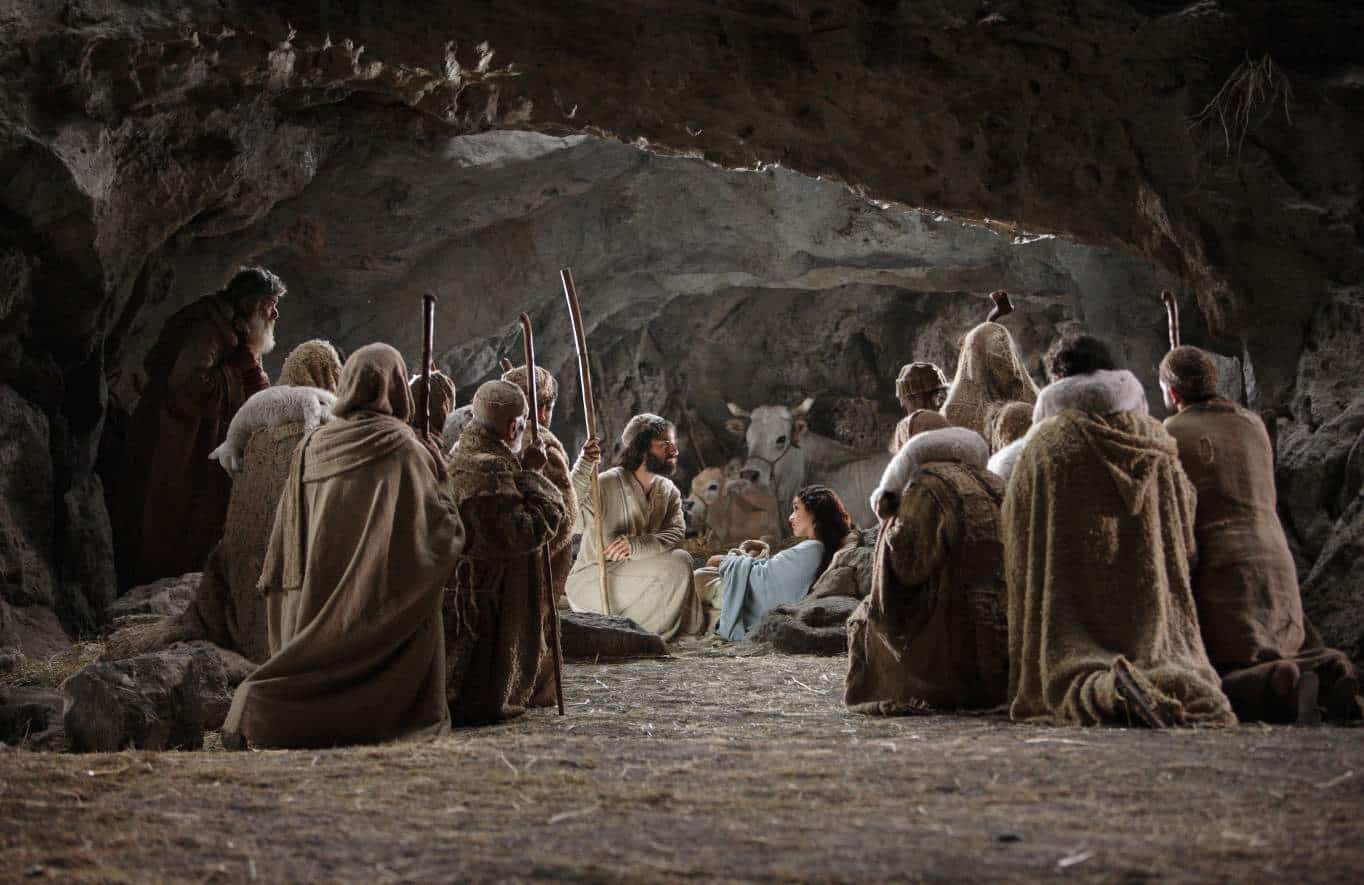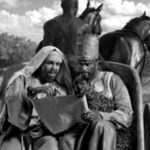Some apologetics for the Christmas season.
Jason Engwer Trablogue
Here’s a post in which I recommended another web site with some good Christmas material.
Review – Pope Benedict XVI’s book on the infancy narratives.History of the December 25 date for Christmas.Index linking to Triablogue material on Jesus’ Bethlehem birthplace.
How parents (and others involved) should handle the Santa Claus issue.
A response to Mark Goodacre on the subject of Jesus’ birthplace. It’s primarily about whether Luke just carelessly repeated what he read about Jesus’ birthplace in Matthew’s gospel.
The nature and historicity of the star of Bethlehem
The alleged pagan roots of Christmas
Christmas-related significance of John 8:12.
Response to an article on the infancy narratives in Newsweek, written by Bart Ehrman.
Links to resources on Luke’s census account.
How we should view Christmas in the context of loss and sin. John Bugay posted an excerpt of a letter Dietrich Bonhoeffer wrote during the Christmas season of 1944.
Excerpt from a Christmas homily by John Chrysostom.
What the Christmas section of a unitarian hymnal would look like.
Ancient non-Christian corroboration of the traditional gospel authorship attributions.
Evidence for Matthew’s authorship of the gospel attributed to him also here.
How the magi discerned that the star of Bethlehem was associated with the birth of a ruler in Israel.
The alleged contradictions between the genealogies of Jesus.
A response to a book by Andrew Lincoln that argues against the virgin birth. Also here and here.
Here’s a post linking to the text of a lecture by Bauckham on Luke’s infancy material in general, especially the census account and Luke 2:22-24.
I should be posting tomorrow on the issue of how much Matthew and Luke agree about Jesus’ childhood. Critics often allege that the two authors have little in common on that subject, sometimes even claiming that they only agree on something like three or four points. Even conservative Christians often mention something like only eight or twelve agreements between the two gospels. I’m going to argue that there’s more agreement between Matthew and Luke than is usually suggested.
Then I’ll be doing a series of posts on Jesus’ childhood outside the infancy narratives. Critics often suggest that there’s little continuity between those narratives and other ancient sources, including the remainder of Matthew and Luke. It’s often claimed that the gospel accounts of Jesus’ adulthood contradict the accounts of his childhood, that Paul and other early sources knew little of the accounts in the infancy narratives, etc. I’ll be addressing those issues in several posts, starting next week.
________________________________________________________
Christmas Apologetics – 2008
Jason Engwer – Triablogue
In a recent book critical of the traditional Christian view of the infancy narratives, Marcus Borg and John Crossan wrote:

“The stories of Jesus’s birth are the foundation of the world’s most widely observed holiday. Christmas is celebrated by the world’s two billion Christians, a number about twice that of the next largest religion, Islam. Moreover, because of the cultural and commercial importance of Christmas in Western culture and beyond, it is observed by many non-Christians as well. Indeed, no other religious holiday is so widely commemorated by people who are outside of the tradition that originated it….Indeed, in contemporary Western culture and even for many Christians, the commemoration of Christmas exceeds the commemoration of Easter. Because of the importance of Christmas, how we understand the stories of Jesus’s birth matters. What we think they’re about – how we hear them, read them, interpret them – matters. They are often sentimentalized. And, of course, there is emotional power in them. They touch the deepest of human yearnings…Moreover, for many Christians, they are associated with their earliest memories of childhood. Christmas has emotional power….They [the infancy narratives] speak of personal and political transformation.” (The First Christmas [New York, New York: HarperCollins Publishers, 2007], pp. vii-viii)
Though I disagree with much of what Borg and Crossan go on to say, I agree with their assessment of the significance of Christmas and the infancy narratives.Last year, I organized much of Triablogue’s material on the infancy narratives by linking it to the relevant texts from Matthew and Luke.
You can also access all of our posts archived under the topic of Christmas here.
If you’re looking for material on Luke’s census, for example, you can click on the relevant links in the text of Luke 2 on the second page linked above, or you can go to the third page linked above and search under “census” with the Ctrl F feature on your keyboard.
You may want to scroll through the third link above, or click a lot of the links within the first two pages, to get a better idea of the range of material we’ve written. We’ve covered many topics that I’ve rarely or never seen addressed elsewhere on the web. There are hundreds of relevant articles in our archives.
Glenn Miller has some good material on the infancy narratives, including an article he wrote this year on alleged contradictions between the accounts in Matthew and Luke. J.P. Holding has some good material as well. So does CADRE Comments.
John McCarthy has some helpful material on the infancy narratives at The Roman Theological Forum.
I would recommend the same books on the historicity of the infancy narratives that I’ve mentioned in previous years. The best resource on Matthew’s infancy material is Craig Keener’s commentary on that gospel (Grand Rapids, Michigan: Eerdmans, 1999). The best resource on Luke is Darrell Bock’s commentary (Grand Rapids, Michigan: Baker Books, 1994). Raymond Brown’s The Birth Of The Messiah (New York, New York: Doubleday, 1999), though wrong on many points, covers the issues in a lot of depth and remains one of the best resources available. A good concise treatment is Ben Witherington’s article in the Dictionary Of Jesus And The Gospels, Joel B. Green, et al., edd. (Downers Grove, Illinois: InterVarsity Press, 1992), pp. 60-74.I’ve reviewed the most influential modern scholarly work on the infancy narratives, Raymond Brown’s book cited above, in three articles: one, two, and three. I’ve also reviewed two more recent works critical of the infancy narratives, Geza Vermes’ The Nativity (New York: Doubleday, 2006) and Marcus Borg and John Crossan’s The First Christmas (New York, New York: HarperCollins Publishers, 2007). I’ve reviewed Vermes’ book here.Borg and Crossan’s book is reviewed in five parts: one, two, three, four, and five. There’s a lot of relevant, and often underestimated, material in the church fathers. Below are a few representative passages, which should give you an idea of how the early Christians interpreted the infancy accounts and how non-Christians responded to those accounts, for example:Justin Martyr, Dialogue With Trypho, 77-79
Justin Martyr, First Apology, 34
Julius Africanus, Eusebius’ Church History, 1:7
Origen, Against Celsus, 1:51
Origen, Against Celsus, 1:58-61The earliest commentary on one of the infancy narratives is Origen’s homilies on Luke. They’re available in English translation in Joseph Lienhard, Origen: Homilies On Luke, Fragments On Luke (Washington, D.C.: The Catholic University Of America Press, 1996).Is it acceptable for Christians to celebrate Christmas?A good resource on the history of Christmas as a holiday, such as its cultural influence and the development of Christmas traditions, is Bruce Forbes’ Christmas: A Candid History (Berkeley and Los Angeles, California: University of California Press, 2007). I disagree with Forbes on some issues, especially related to the earliest history of Christmas, but the book has a lot of information about the history of the holiday.Here are some points to keep in mind regarding the historicity of the infancy narratives:
– There would have been interest in Jesus’ background, including some elements of the infancy narratives, among both Christians and non-Christians even before Jesus died. Such interest is to be expected, given the common Messianic expectations of that era (see, for example, here and here). Paul, the gospels, and other early Christian sources express interest in Jesus’ background, and all of the gospels agree that both Jesus’ followers and His opponents were interested in His background before Jesus even died. Christians wouldn’t have waited until late in the first century to begin asking questions about issues such as Jesus’ ancestry and birthplace.
– The early Christians and their enemies had access to multiple sources who would have had reliable information on the events surrounding Jesus’ infancy. Some of the sources with the most knowledge of Jesus’ backgroundwere initially opposed to Christianity, so information about His infancy that would have been damaging to Christianity, if that sort of information existed, would have been accordingly accessible to non-Christian sources.
– Critics who cite sources like Josephus and Tacitus against the infancy narratives, such as when discussing the Slaughter of the Innocents or Luke’s census, shouldn’t then argue that reliable information about such issues wouldn’t have been preserved as late as the time of the gospels. If reliable information wasn’t available at that time, then Josephus and Tacitus didn’t have it either.
– The gospels of Matthew and Luke belong to a historical genre, and the earliest Christian and non-Christian sources interpreted the infancy narratives as accounts meant to convey history.
– Historians regularly practice harmonization of sources, and the infancy narratives can be harmonized. That harmonization depends on some premises critics often deny or minimize, such as the premise that two accurate genealogies of the same individual can significantly differ and the premise that Matthew 2:16 probably places the events of Matthew 2 after everything in Luke’s gospel prior to Luke 2:39. But those premises are reasonable and make better sense of other data involved, such as the early and widespread acceptance of both gospels as harmonious.
– An argument that Matthew and Luke are inconsistent, if granted, doesn’t give us reason to reject both accounts or even everything in one account. The argument from inconsistency only goes so far.
– Contrary to what critics allege, the infancy narratives are consistent with what the gospels and other sources report about Jesus’ public ministry.
– Human memory is more reliable than skeptics often suggest.
– The early opponents of Christianity weren’t apathetic about the religion, and they weren’t apathetic about the infancy narratives. Many of the arguments used by modern critics of the infancy accounts are found in Justin Martyr’s Dialogue With Trypho, Origen’s Against Celsus, John Chrysostom’s Homilies On Matthew, and Augustine’s Harmony Of The Gospels, for example.
– Vague accusations of gullibility on the part of ancient people are insufficient to dismiss the historicity of the traditional Christian view of Jesus’ infancy. Any accusation of gullibility would have to be argued, not just asserted. It would have to be shown that the degree of gullibility is sufficient to establish what the critic wants to establish. Other factors would have to be taken into account, such as the fact that the early opponents of Christianity wouldn’t have had a desire to believe in Christianity. Christian gullibility wouldn’t explain non-Christian corroboration of Christian claims. And the critic who dismisses ancient people as too gullible to trust should explain why historians disagree with him, should explain whether he trusts ancient sources on other matters, and should explain why he’s trusting sources like Josephus and Tacitus if he’s going to cite them against the infancy narratives.
– The early enemies of Christianity corroborated some of the evidence for the infancy narratives that modern critics argue against, such as the authorship attributions of the gospels (see here, here, here, and here) andJesus’ birth in Bethlehem.
– Some of the modern critics’ objections to the infancy narratives weren’t raised by the early enemies of Christianity, even though those early enemies were in a better position than modern critics to judge the Christian claims. An example is the historicity of Luke’s census.
– Some significant arguments and conclusions of conservative scholarship on the infancy narratives are accepted by non-conservative scholars. See, for example, here and here.
– Just as conservative scholars disagree among themselves on some points related to the infancy narratives, so do non-conservatives. For example, compare the three books I’ve cited above that are critical of the infancy narratives. Brown, Vermes, Borg, and Crossan agree on some points, but disagree on others.
– Scholarly disagreements over the infancy narratives largely occur for the same reasons they occur on other such issues: whether naturalism is assumed, how much weight is assigned to external evidence, etc. Brown’s book cited above, for example, though more reasonable than works like Vermes’ and Borg and Crossan’s, rests heavily upon highly speculative arguments from internal evidence. He often recognizes the speculative nature of his arguments and acknowledges that he doesn’t have much reason to be confident about his conclusions. He’ll suggest that one part of the infancy narratives may have been derived to a significant extent from one portion of the Old Testament, then he’ll appeal to a different portion of the Old Testament to explain another part of the infancy accounts. Brown has to appeal to a wide range of Old Testament sources in his attempt to explain much of the infancy narratives as something other than an effort to convey history. On p. 193, we’re told about a wide range of possible sources for the material in Matthew 2, including “the combined story of Joseph in Egypt and Moses…the stories of the birth of Abraham, the visit of the Queen of Sheba to Solomon, and the struggle between Laban and Jacob…the most likely background is offered by the episode centered on Balaam in Num 22-24…The Matthean Herod resembles both the Pharaoh and Balak.” After citing such a diverse array of possibilities, Brown assures us that he’s omitted any mention of other parallels that are “too tenuous” (n. 40 on p. 193). I prefer his advice elsewhere that “one should be cautious in drawing an identification from such echoes of an OT scene.” (p. 344) Brown often acknowledges that his conclusions could be wrong and that the narratives could be more historical than he concludes (for example, pp. 578-579). The Old Testament is a large collection of literature that covers a wide range of personalities, circumstances, and issues. Finding some parallels of New Testament events in the Old Testament doesn’t have the sort of significance that liberal scholars often suggest, nor does the use of Old Testament language by first-century Jews who lived in an atmosphere so heavily influenced by that language. Brown doesn’t go as far as critics like Vermes, Borg, and Crossan, but he does arrive at a view of Jesus’ infancy that’s far from what the early Christians or their opponents believed. When modern liberal scholars find themselves so far to the left even of the earliest enemies of Christianity, they ought to ask themselves where they went wrong.












![The Serpent with a Thousand Faces [Flat Earth, Syncretism & the NEW New World Order]](https://christianobserver.net/wp-content/uploads/2017/12/11-150x150.jpg)
